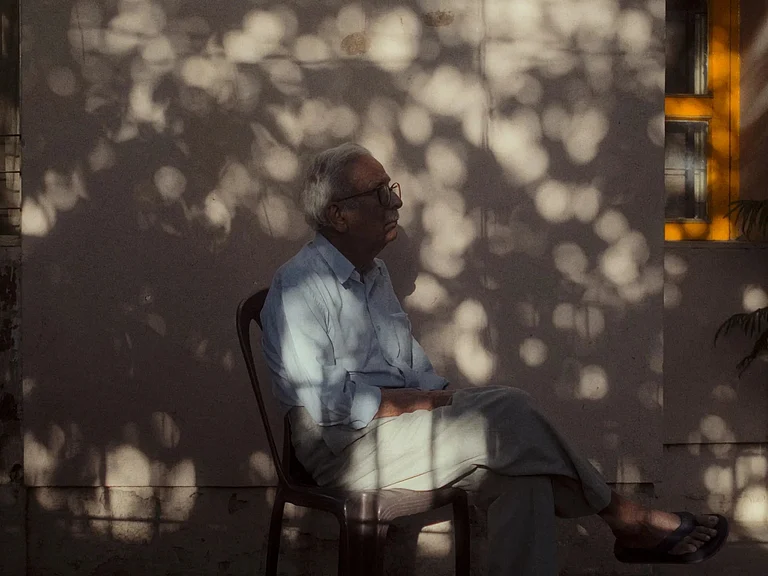Soma: Poems by A.K. Ramanujan
With additional features
Edited by Guillermo Rodriguez And Krishna Ramanujan
India Viking
Soma, the mystic elixir of the gods or rather the mystic elixir evoked in the Vedas that featured time and again in sacrificial rituals, rather like the cactus pulp of Mayan rituals that created frenzy and ecstasy among worshippers and spurred them to new heights of bloodthirsty devotion. Over the course of time, Soma was so revered in its devotion heightening capacity that it ultimately became a deity in its own right, linked to the moon and its whimsies always moody and magical. It has recently been linked to amanita muscaria though anthropologists have claimed ‘poppy, cannabis and ephedra were used for making the soma-haoma drinks,’ Soma is described in the Vedas as a plant, a drug and a god, the ‘lord of speech, leader of poets, and seer among priests’. In short, inspiration.
The newly published poems of AK Ramanujan hail from a so-called missing period in his literary life. They centre on Soma, though there is a context to that since they were written during the sixties, a time of openness and revolution where religion and drugs proliferated in an attempt to gain better understanding of an often contrary world. Ramanujan intended to publish the poems and they were among his discarded drafts but for whatever reason they never appeared in print.
There is a background to it, of course - the publication of R. Gordon Wasson’s seminal Soma: Divine Mushroom of Immortality which resulted in a new inspiration for contemporary poetry at the time. Ramanujan responded to the contemporary interpretation of an old myth and found it the elixir of inspiration. The 22 poems which form the core of this book all relate to Ramanujan’s relationship with Soma in varying ways.
They form a kind of watershed in Ramanujan’s work, between the imagery of his early work dating from the 1950’s and the later abstract, more metaphysical poems of the 1980’s, though they take up his interest in scriptures, Sanskrit and Tamil and Kannada poets. The series begins with an invocation to Soma.
Be kind, Soma.
Do not confuse our little flowers with your
whirl of skills.
At times, a person with echoes of Catullus, a woman, a man but above all a mushroom that is hallucinogenic which may or may not be real but who performs rituals of a kind coming across as a kind of ‘restless’ trickster.’ He is brought to earth;
‘once eye / of heaven, now a mushroom at my feet.’
It’s Soma who reads the timeless almanacs
in The Sun Times once a year,
photographs the rainbows and auras
all around the black cat and him and you,
In Soma, I said, is no Vishnu the bulk of the poem, including the lines given below consists of translations from Nammalvar taken from Hymns for the Drowning, though this again was something that Ramunajan did shifting back and forth from his own work to translations from sacred poetry.
Poets,
beware, your life is in danger:
the lord of gardens is a thief,
a cheat,
Ramanujan quotes and slips in references to other poets, something that was an integral part of his work and many splendoured scholarship.
Is a lover’s hand
In, on, below between
A reference to Donne’s
License my roving hands, and let them go
Before, behind, between, above, below.
In Ramanujan’s stripped to the essence poetry Soma is reduced to its bare bones
Soma, Soma has no similar,
grows ordinary as mystery,
An age old new age phenomenon that somehow, according to Ramanjan, manages to be part of the every day without losing any of its mystique. It is an invocation that may or may not sanctify the poet’s wanderings through the city streets, the television screen or from country to country. When Soma is abroad relates directly to Kolatkar’s Jejuri and is the first time that Ramanujan refers to the work of his contemporaries in a poem, making it again a discovery of sorts.
When Soma is abroad
dialect and jargon glow.
Mother-tongues wear classics on their sleeves,
father tongues loosen,
schoolbook rules run into love and war,
The poems are supported by essays that delve into the Soma phenomenon making it at times more a work for those interested in mythopoetics than the simple poetry lover. Certainly the work of Wendy Doniger and Ramnujan’s son add value to the Soma issue. However, the conversation between Panikker and Ramanujan throws more light on the poet’s work as Panikker asks Ramanujan whether his English poems were first thought of in Kannada, since Ramanujan was a skilled translator and wrote in both languages. Interestingly, Ramanujan says that working with a living language very often becomes a cliché. The conversation was recorded by Panikker and preserved though some of the recording was inaudible. However it holds an indelible message.


























